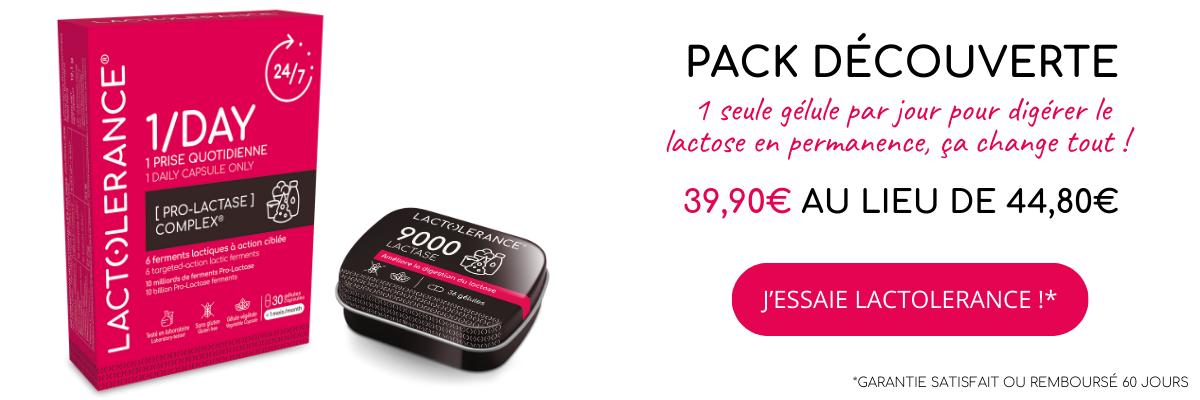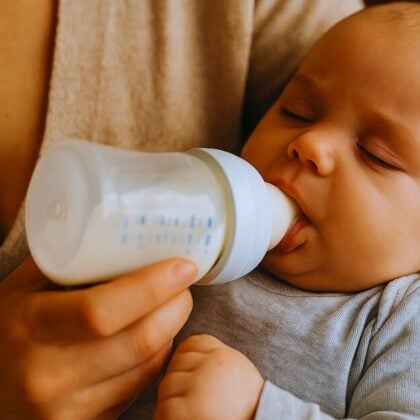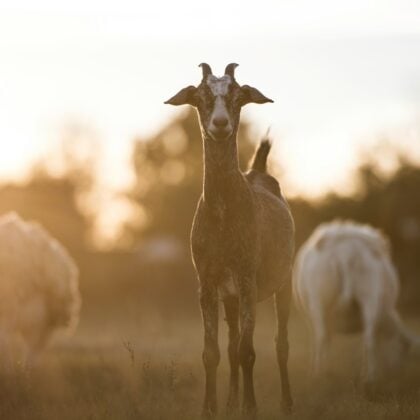
How much lactose does this food contain?
There's a question on your mind! In this article, you'll find a table of the main dairy products or those containing milk, showing their lactose content.
Are you fed up with reading labels to avoid being tricked by lactose ?
➡️ Improve your lactose digestion with our supplements
Lactose content of foods
Can't find what you're looking for?
Send us a message in click here This table of lactose contents will be enriched by your requests
Lactose content of dairy products |
In grams per 100 g
|
|
Milks |
||
| Whole milk | 4,9 | |
| Skimmed milk | 4,9 | |
| Light Morning" lactose-free milk | 0,1 | |
| Concentrated milk | 9,5 à 12,5 | |
| Sheep's milk | 4,3 à 4,7 | |
| Goat's milk | 4,0 – 5,0 | |
| Milk powder (skimmed) | 51 | |
| Milk powder (whole) | 35 | |
| Curdled milk | 4,5 | |
| Breast milk | 5,0 à 9,5 | |
| Powdered whey | 66 | |
| -> Most animal milks contain about 5 % of lactose | ||
Butter, creams and fermented milks |
||
| Butter | 0,6 | |
| Buttermilk | 4,0 | |
| Whipped cream 10% | 4.0 | |
| Whipped cream 30% | 3,3 | |
| Fresh cream | 2,5 | |
| Margarine | 0 à 1,0 | |
| Little Swiss Nature 40% | 3,3 | |
| Natural yoghurt | 4,8 | |
| Natural homemade yoghurt | 0,0 | |
| Flavoured yoghurt | 3 à 4 | |
| Drinking yoghurt | 4,0 | |
| Sheep's milk yoghurt | 2.2 | |
| Goat's milk yoghurt | 2.0 | |
| Kefir | 4,0 | |
Desserts |
||
| Cream (vanilla, chocolate, caramel etc.) | 6,2 | |
| Rice with milk | 4.0 and above | |
| Ice cream | 5.0 and above | |
| Ice cream bar | 10,8 | |
| Cream puffs, éclair | 1,2 | |
| Flan | 6,2 | |
| Ice | 6,0 | |
| Crème fleurette - Chantilly cream | 3,1 | |
Cheeses |
||
| Fromage frais - fromage frais - Skyr | 2,5 à 4,1 | |
| Sheep's milk cheese | 4,7 | |
| Cottage cheese (Saint Môret, Philadelphia...) | 3,5 | |
| Mozzarella | 2,5 | |
| Soft cheese : Camembert, Brie,... | 1,0 à 2,0 | |
| Semi-hard cheese: raclette cheese, Reblochon, Cantal, etc. | Traces at 1.0 | |
| Extra-hard or hard cheese: Gruyère, Emmental, Gouda, Mimolette,... | Traces | |
| Feta | 0,5 à 1.4 | |
| Roquefort | 2,0 | |
| Mascarpone | 4,0 | |
| Dishes | 3,6 | |
| Edam | 2,0 | |
| Parmesan cheese | 0,05 à 3,1 | |
| Raclette cheese | 0,1 | |
| Cottage cheese | 2,0 à 4,0 | |
| Cheese fondue | 1,8 | |
| Cancoillotte | 3,7 | |
Snacks |
||
| Chocolate bread | 0,7 | |
| Crescent | 0,5 | |
| Spreads | 4,6 | |
| Coated chocolate bar | 7,8 | |
| Chocolate filled biscuits & snacks | 3,2 | |
| Dry biscuit | 0,1 | |
| Milk chocolate | 7,2 | |
| Cookie | 3,2 | |
Other lactose-rich foods |
||
| Charcuterie | 1,0 à 4,0 | |
Source: Crédoc and ASPCC
⚠️ These figures are averages; lactose content may vary according to brand, recipe and manufacturing process.
👇 Say goodbye to digestive problems with our Discovery pack! 😉👇
Lactose is hidden in many foods, starting of course with milk and its derivatives. But each food has a specific lactose content, so it can be a bit confusing when you don't know enough about the subject.
Follow the guide to help you understand the lactose content of foods so you don't have to read every label in the supermarket.
What determines the lactose content of a food?
As a general rule, the more processed a food is, the less lactose it contains. Milk, for example, is particularly rich in lactose, so is poorly digested by most people with lactose intolerance. Because it is naturally liquid, milk causes a rapid emptying of the stomach, resulting in a large amount of lactose entering the intestine.
Next comes yoghurt, which reaches the intestine more slowly and gives the lactase (the enzyme responsible for converting lactose into easily assimilated simple sugars) more time to digest the lactose.
Whey and bacteria respectively eliminate and break down some of the lactose in the cheese. After 6 weeks of maturing, the lactose disappears almost completely:
- Fresh cheeses, feta and mozzarella have a moderate lactose content.
- Soft, semi-hard and hard cheeses contain only traces of lactose.
Butter also has a very low lactose content, at around 0.6g of lactose per 100g of finished product.
Please note: this principle only applies to dairy products. Lactose is an ingredient in other processed or ultra-processed products, such as cold meats, cakes and industrial ready meals.
Lactose-free products: how is lactose removed from dairy products?
Lactose-reduced products are an excellent alternative to traditional dairy products for people with lactose intolerance. One example is 'Matin Léger' lactose-free milk, which contains just 0.1g of lactose per 100g, compared with 4.9g per 100g of whole or skimmed milk. So how do we explain this low lactose content, which is so popular with people who suffer from digestive discomfort caused by lactose consumption?
To produce lactose-free dairy products, the dairy industry actually adds lactase, so as to skip a stage in the lactose digestion process. From a scientific point of view, this is a break in the molecule. In other words, the nutritional value of a lactose-free product is no different from that of a conventional dairy product.
By forming 2 smaller, easily digestible molecules from lactose - glucose and galactose - lactase simply changes the taste of lactose-free milk, which is slightly sweeter than traditional cow's, goat's or sheep's milk.
At home, you too can prepare lactose-free dairy products by adding a lactase supplement to your favourite recipes. You can also use fermented dairy products, such as kefir, whose bacteria convert some of the lactose into lactic acid.

Hello, I'm Vincent
Like you, I'm lactose intolerantI know exactly what you're going through and the difficulties you encounter on a daily basis. For over 10 years, I've been helping our customers to use our dietary supplements and giving advice and tips on how to improve their digestive comfort. I'm also a keen cook and gourmet, so you'll find my favourite recipes for a lactose-free diet in this blog.
Lactose intolerance is not inevitable! With LACTOLERANCE you can digest with complete peace of mind






